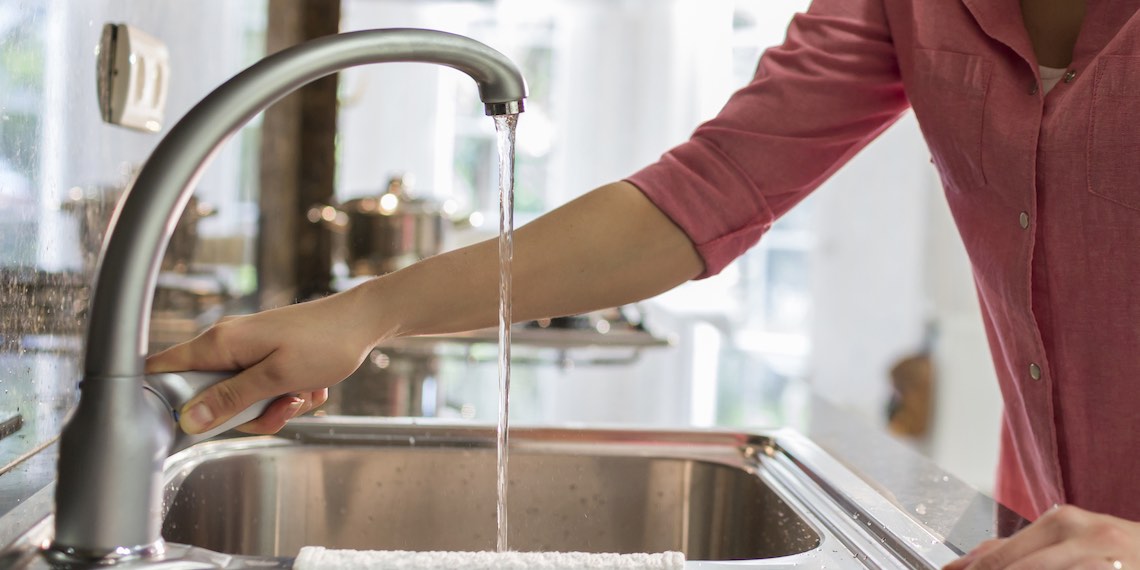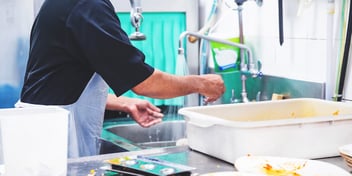Turn it off, Bob: Taking water conservation beyond the meter

Continuous community water conservation efforts are a key priority for many water utilities — even when dams are full — and water-use data is providing highly valuable insights for informing "beyond-the-meter" initiatives that help customers reduce consumption in the home.
Sydney Water Head of Customer Programs Melanie Werner said water service providers have the opportunity to play a pivotal role in educating people about the fundamental importance of water and how to use it efficiently.
“We know that it's important for people to use water efficiently all the time, not just when we're in drought,” she said.
While Sydney Water has been committed to encouraging water-wise behaviours in the community for decades — starting more than 30 years ago with the utility’s WaterFix Residential program, as well as school education programs — Werner said growing populations and climatic changes are demanding more nuanced approaches to water literacy.
“As we saw in the last drought across Australia, things can change very quickly. In Greater Sydney, we saw our dam storage levels drop by 50% in two and a half years. This really highlighted the importance of having these ongoing conversations with our customers,” she said.
“We've got to have an ongoing commitment to water conservation, and it’s important to adapt the design of programs depending on what’s occurring, what's relevant to our customers and the broader issues that we're facing as an organisation.
“We know that our city is growing, the climate is changing, and we can't afford to become complacent. We need to do whatever we can to ensure the future of water and helping our customers conserve water in their homes is a key part of that.”
End-use insights
In order to gain more insight about how customers are using water beyond the meter, Sydney Water launched an end-use study in 2018, which helps to inform some of the utility's key water conservation initiatives.
“At the moment, the end-use study involves more than a hundred households and some pretty clever data logging and data analytics, which looks at water-use patterns inside the home and can determine how water is being applied,” she said.
“There's a lot of different types of households and properties in Greater Sydney, but on average, 26% of water is used in showers, 23% is applied outdoors, 20% is used by toilets, 13% through indoor taps and dishwashers, 12% through washing machines and 6% through baths.
“We know that more than half of water use in the home occurs in the bathroom, between showers, baths and toilets. This type of information certainly helps us to then design things like advertising campaigns.”
Werner said data from the ongoing end-use study provides the utility with valuable information that has had an influence on the WaterFix Residential program, too.
“Via our WaterFix Residential program, we promote different types of repairs or efficient fitting installations in the home,” she said.
“We identified that four-star shower heads really are the way to go — they're the most efficient fitting on the market at the moment. So from 2019, we introduced them to the WaterFix Residential program with the aim of trying to reduce the high proportion of shower use.
“And we also identified that fixing small leaks was a real opportunity for us through the end-use study, too.”
Digital benefits
Aside from the end-use study, Sydney Water is also working more with digital meters to help produce deeper understandings of consumer water use that go beyond average rates.
“Like a lot of other utilities, we're trialling digital meters, and we also use them in our newer multi-level apartment buildings in Sydney. We ran a trial in 2020 with 175 staff members who received a digital meter and an app at the same time,” Werner said.
“Our aim was to explore behavioural change, including what kind of signals and messages we could send to people to help influence their water use.”
Werner said Sydney Water is also trialing digital meters in Liverpool, where nearly 6000 meters are rolled out, as well as more than 100,000 installed in multilevel apartment buildings.
“One of the very valuable things digital meters provide is a leak alarm. They let us know when there's continual water use at a property, and we can then use that information to notify our customer,” she said.
“In the future they will also allow us to provide our customers with detailed information about their water use habits, giving us the opportunity to help them reduce their consumption. Digital meter data provides further insights into water use beyond the meter, which we use to try and influence people and give them useful information that can help them save water.
Werner said Sydney Water has set its sight on trying to gather enough data to inform more personalised recommendations for customers.
“We've got a little way to go on that, but digital meters certainly give us much more granularity of consumption data. In the future, we're aiming to understand our customers better,” she said.
Campaigning for change
Werner said the valuable insights about consumer habits offered up by the end-use study and digital metering trials has also informed Sydney Water’s most recent water conservation campaign, which was developed to encourage more water wise behaviours in the home.
Starring Australian comedian and water advocate Shane Jacobson as Bob, the advertisements use humour to help highlight the need to be conscious of how much water is being used and to generate conversation around daily water-use habits.
“Turn It Off, Bob was really about trying to create a very relatable character and generate a high degree of talkability, which is about getting people discussing the messaging with their friends and family,” she said.
“There’s been a few iterations of Turn It Off, Bob, but the ad that launched the campaign started with a focus on showers, as we know that’s a key proportion of water use in the home. Showers are a great target for behavioural change.
“The campaign aims to use humour to communicate more effectively with our customers. It’s certainly a different approach, but it carries a very important message to people without customers feeling like we were imposing rules.”
Werner said so far the campaign has produced some very promising results.
“As a result of the campaign, about three in five people are now monitoring time in the shower,” she said.
Moving into the cooler months, Werner said Sydney Water’s campaign focus will likely switch to other important water literacy angles, including preventing blockages in wastewater pipes, but that it’s likely Sydney residents will be seeing more of Bob.
“While we are not yet sure what messaging we will need following winter — it’ll depend completely on what’s happening — but the intention is to continue to utilise Bob for quite some time,” she said.

